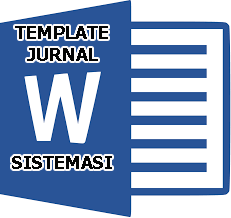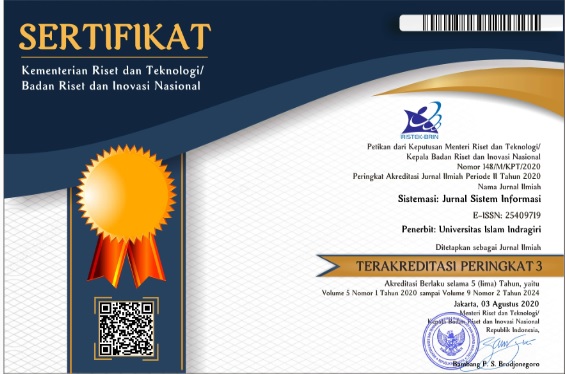Analysis of User Adaptation to the My Capella Application based on the Coping Model of User Adaptation (CMUA)
Abstract
Keywords
Full Text:
PDFReferences
A. Deni, Manajemen Strategi di Era Industri 4.0. Cendikia Mulia Mandiri, 2023.
E. Raza and A. L. Komala, “Manfaat dan Dampak Digitalisasi Logistik di Era Industri 4.0,” J. Logistik Indones., Vol. 4, No. 1, pp. 49–63, 2020.
P. Stone, “Digital Transformation in the Automotive Industry: Trends & Use Cases,” FlowForma, 2024. https://www.flowforma.com/blog/digital-transformation-in-automotive-industry-trends-and-use-cases
D. Newman, “Top 9 Digital Transformation Trends in Automotive For 2020,” Forbes, 2019. https://www.forbes.com/sites/danielnewman/2019/12/20/top-9-digital-transformation-trends-in-automotive-for-2020/
D. R. Prasser, “Essential Guide to Digital Transformation in the Automotive Industry [2025 & Beyond],” StartUs Insights, 2025. https://www.startus-insights.com/innovators-guide/digital-transformation-in-the-automotive-industry/
J. K. Pasaribu, E. Edward, M. Wijaya, and M. Sisiliaa, “Pengaruh Disiplin Kerja, Stres Kerja, dan Pengawasan Kerja terhadap Kinerja Karyawan pada PT Capella Dinamik Nusantara Medan,” War. Dharmawangsa, Vol. 14, No. 1, 2020.
P. C. D. Nusantara, “My Capella,” 2025. https://play.google.com/store/apps/details?id=com.cdn.mycapella
A. Beaudry and A. Pinsonneault, “Understanding User Responses to Information Technology: A Coping Model of User Adaptation,” MIS Q., pp. 493–524, 2005.
K. R. Pillai, P. Upadhyaya, A. V. Prakash, B. S. Ramaprasad, H. V Mukesh, and Y. Pai, “End-User Satisfaction of Technology-Enabled Assessment in Higher Education: A Coping Theory Perspective,” Educ. Inf. Technol., Vol. 26, No. 4, pp. 3677–3698, 2021.
G.-D. Nguyen and M.-T. Ha, “The Role of User Adaptation and Trust in Understanding Continuance Intention Towards Mobile Shopping: An Extended Expectation-Confirmation Model,” Cogent Bus. Manag., Vol. 8, No. 1, p. 1980248, 2021.
S. P. Delima, “Analisa Adaptasi Pemakai E-Learning menggunakan Coping Model Of User Adaptation pada Universitas Abdurrab Pekanbaru.” Universitas Islam Negeri Sultan Syarif Kasim Riau, 2022.
R. S. Lazarus, Stress, Appraisal, and Coping, Vol. 464. Springer, 1984.
H. M. Jogiyanto, “Sistem Informasi Keperilakuan,” Yogyakarta Andi Offset, Vol. 235, 2007.
H. Bala and V. Venkatesh, “Adaptation to Information Technology: A Holistic Nomological Network From Implementation to Job Outcomes,” Manage. SCI., Vol. 62, No. 1, pp. 156–179, 2016.
A. O. De Guinea and J. Webster, “An Investigation of Information Systems use Patterns: Technological Events as Triggers, the Effect of Time, and Consequences for Performance,” Mis Q., pp. 1165–1188, 2013.
G. T. Pontoh, “Pengaruh Penilaian terhadap Infusi Sistem Informasi Akuntansi berbasis Akrual melalui Perilaku Adaptasi Pemakai,” Sesindo, Vol. 2015, 2015.
A. Astriana, “Pengaruh Penilaian terhadap Infusi Sistem Informasi Akuntansi berbasis Akrual melalui Perilaku Adaptasi Pemakai pada Lembaga Administrasi Negara,” J. Adm. Negara STIA LAN Makassar, Vol. 21, No. 2, p. 42649, 2015.
Y. Barlette, A. Jaouen, and P. Baillette, “Bring Your Own Device (BYOD) as Reversed IT Adoption: Insights into Managers’ Coping Strategies,” Int. J. Inf. Manage., Vol. 56, p. 102212, 2021.
P. C. D. Nusantara, “PT Capella Dinamik Nusantara Main Dealer Sepeda Motor Honda Wilayah Aceh, Riau & Kepri,” 2025. https://www.cdn.co.id/index.php
S. K. Lwanga, S. Lemeshow, and W. H. Organization, Sample Size Determination in Health Studies: A Practical Manual. World Health Organization, 1991.
J. H. M. Willy Abdillah, “Partial Least Square (PLS), Alternatif Structural Equation Modeling (SEM) dalam Penelitian Bisnis,” 2015.
I. Ghozali, “SEM Metode Alternatif dengan menggunakan Partial Least Squares (PLS),” Semarang Badan Penerbit Univ. Diponegoro, 2014.
K. J. Fadel, “User Adaptation and Infusion of Information Systems,” J. Comput. Inf. Syst., Vol. 52, No. 3, pp. 1–10, 2012.
DOI: https://doi.org/10.32520/stmsi.v14i4.5328
Article Metrics
Abstract view : 299 timesPDF - 56 times
Refbacks
- There are currently no refbacks.

This work is licensed under a Creative Commons Attribution-ShareAlike 4.0 International License.









